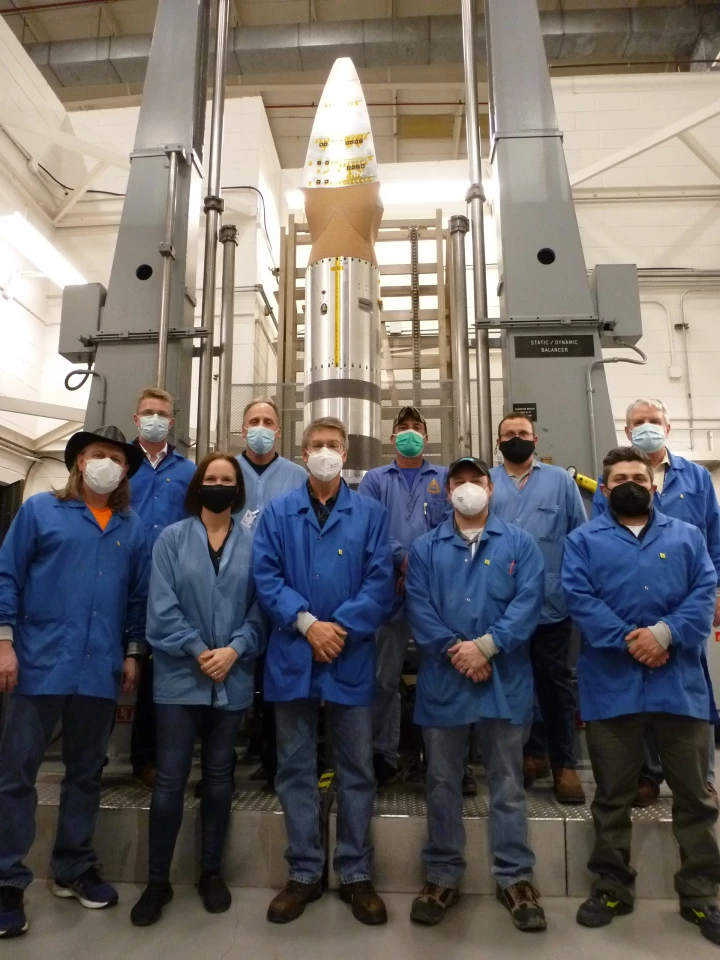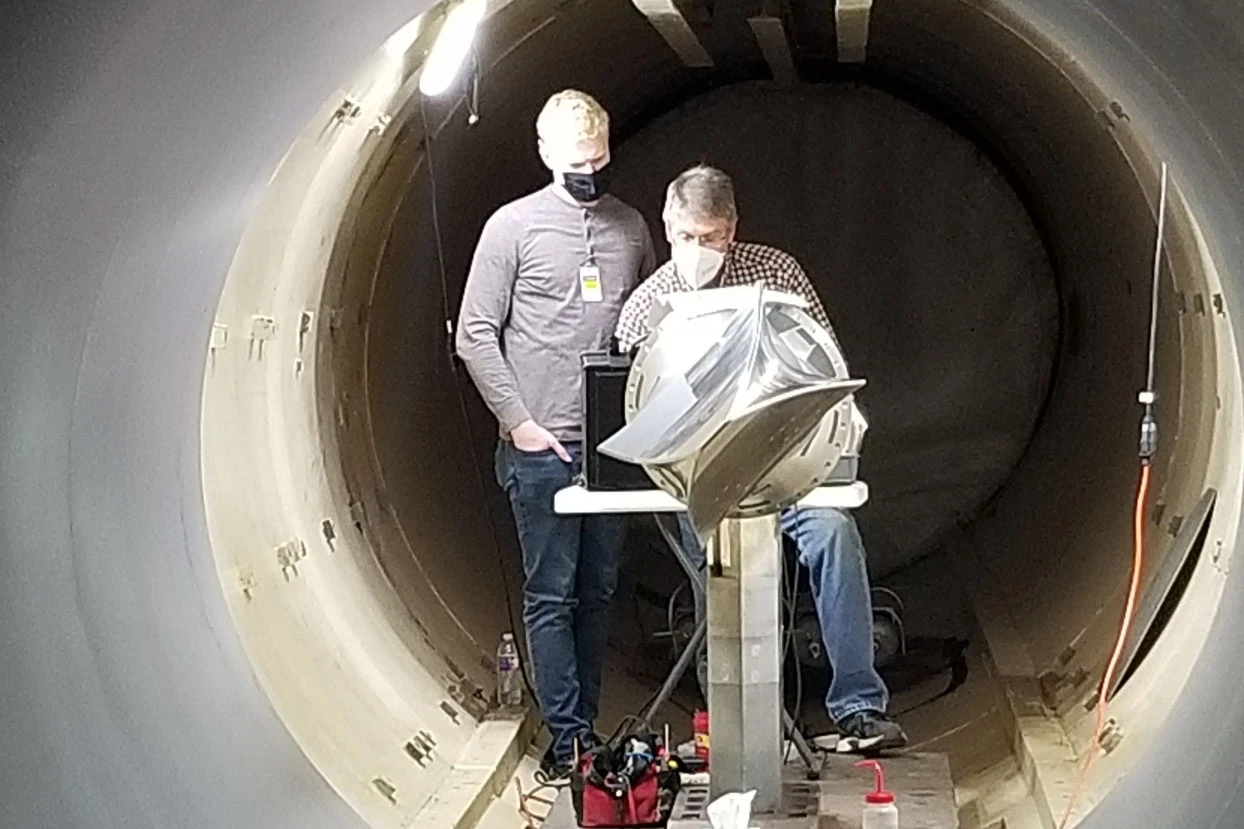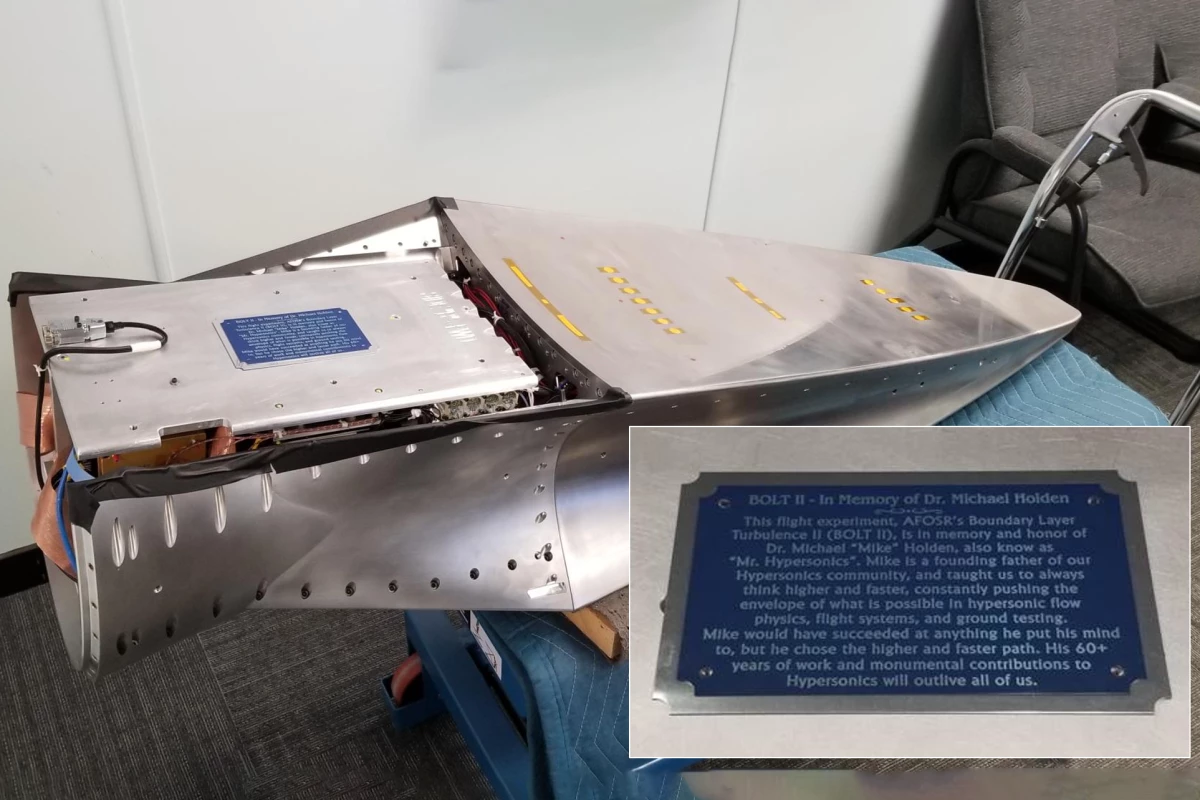The US Air Force Research Laboratory (AFRL) and Air Force Office of Scientific Research (AFOSR) are planning to live-stream a rocket launch in Virginia tonight, running hypersonic tests on the Bolt II flight system at speeds up to Mach 6.
The Bolt experiments seek a better understanding of the boundary layer transition and turbulence that are responsible for massive heat buildup at hypersonic speeds – a notoriously difficult problem to study in a wind tunnel. The results could hugely influence the design of future hypersonic vehicles, from hypersonic weapons to potential hypersonic passenger planes.
As University of Queensland hypersonics research fellow Chris James explained to The Conversation, when an aircraft moves through the air, a thin "boundary layer" of air forms around the surface and gets dragged along with the aircraft. At the leading edge of the aircraft, this boundary layer will exhibit a smooth, "laminar" flow, but as the boundary layer extends backward, it'll degenerate into a violent, chaotic turbulence.
This turbulence generates enormous drag and heat at hypersonic speeds, and it's proving incredibly difficult for engineers to predict where on an aircraft's surface these transitions between laminar flow and turbulence will occur. Thus, it's hard to know how to reduce drag and heating in a design, and it's also hard to know where to put the most serious heat shielding, or where to place the most sensitive components.

“Turbulent flow drives up the heat over the largest portion of the vehicle,” said Dr Sarah Popkin, AFOSR's Program Officer for high-speed aerodynamics, in a press release. “There's a lot of heat that happens right at the very leading edge, but that's all in a very focused area. Turbulence can cause heat to evolve over almost the entire vehicle surface, and so now you're having to worry about protecting internal electronics and things like that, from that heat, and being able to understand and predict the turbulence associated with the heating will help us design better hypersonic vehicles. Heat is the mother of all problems for hypersonics.”
The first Bolt flight test was a US$6 million failure. Problems with its rocket launch mechanism prevented it from reaching hypersonic speeds. That flight has been exhaustively analyzed, and the team is confident that Bolt II won't have the same issues.
Bolt II will launch from NASA's Wallops Flight Facility in Virginia on a two-stage sounding rocket, carrying more than 400 sensors and instruments. The vehicle is designed with concave surfaces and swept leading edges. One side is smooth, designed to study smooth surface transitions and turbulence. The other side uses "discrete roughness trips" to study forced transition and turbulence. Atmospheric and stratospheric balloons will be deployed to gather data on the exact conditions the vehicle will be flying through.

Bolt II's flight will take less than 10 minutes. It'll hit Mach 6 on the way up for one experiment, reaching a peak altitude of 281 km (175 miles) before turning over and heading back down to Earth, hitting Mach 5.5 for a second experiment on the way down.
"We have the unique opportunity to test the vehicle in the wind tunnel at several different conditions with flight instrumentation flight hardware, and then go out and fly it,” said a clearly excited Dr. Aaron Dufrene, of R&D company CUBRC. “Those same sensors that we're getting data on in the tunnel, we're going to be able to compare to in flight. It's the first time anything like that's ever happened."
The launch will be streamed live this evening, March 21, on the NASA Wallops YouTube channel.
Source: AFRL






